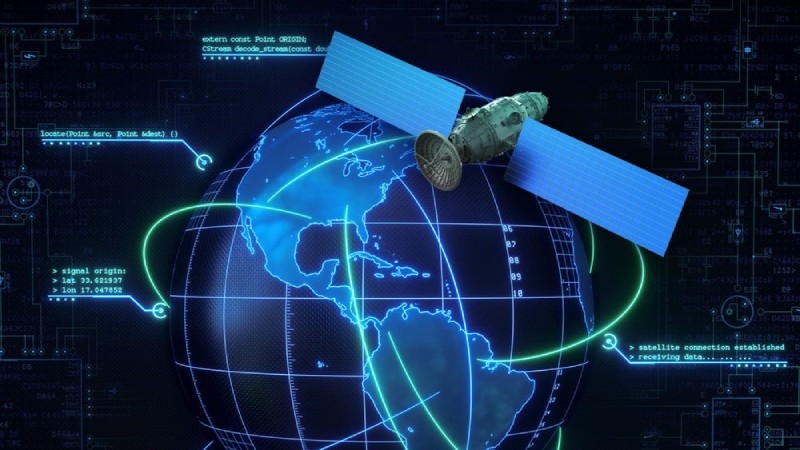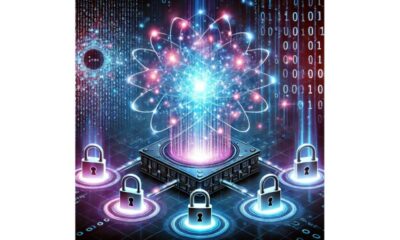Tech
Space-Age Security: Cutting-Edge Encryption Techniques Shield Satellite Communications from Cyber Attacks

In an era where cybersecurity is paramount, the satellite communications industry is leading the charge in adopting cutting-edge encryption methods to safeguard critical data transmissions from malicious actors. As the reliance on satellite technology continues to grow, both in commercial and military applications, the need for robust security measures has become increasingly crucial. Leading satellite operators and technology providers have invested heavily in developing advanced encryption protocols that leverage the latest cryptographic algorithms and key management systems. These innovative techniques ensure that even the most sophisticated cyber threats are unable to penetrate the secure communication channels between satellites and ground stations. “The stakes are incredibly high when it comes to satellite communications,” says Dr. Emily Harrington, a cybersecurity expert at the International Satellite Communications Organization. “The data transmitted can be mission-critical, from military intelligence to financial transactions. Compromising these systems could have devastating consequences, which is why we’ve seen such a push for cutting-edge encryption solutions.”
As satellite communication technology advances, so too do the cyber threats that accompany it. In response to these growing risks, space industry leaders are turning to cutting-edge encryption techniques to safeguard their networks against potential attacks. These advanced security measures ensure reliable and secure transmission of data for a range of applications, including military operations, scientific research, and commercial use.
One such technique is quantum key distribution (QKD), which leverages principles of quantum mechanics to generate cryptographic keys between two parties. Because any attempt at eavesdropping would alter the delicate state of the particles involved, QKD offers an unprecedented level of security against even the most sophisticated attackers. Although still in its early stages, this technology has already been successfully demonstrated in several real-world scenarios, offering promise as a future cornerstone of satellite communications security. Another innovative approach involves using artificial intelligence (AI) algorithms to detect anomalous behavior within network traffic patterns. By continuously monitoring and analyzing vast amounts of data, AI systems can quickly identify suspicious activities or unusual trends, enabling rapid responses before damage occurs. This proactive defense mechanism not only strengthens overall system resilience but also allows for more efficient allocation of resources by prioritizing high-risk areas.
Additionally, the implementation of post-quantum cryptography (PQC) represents another significant stride forward in securing satellite communications. PQC employs mathematical problems that are currently believed to be resistant to both classical and quantum computers, ensuring long-term protection against emerging computational capabilities. With many traditional encryption methods vulnerable to decryption via powerful quantum processors, PQC provides a critical layer of defense in today’s rapidly evolving digital landscape. These advancements in encryption technology underscore the importance of ongoing investment and innovation in the field of cybersecurity.
As our reliance on satellite communications continues to grow, so too must our commitment to protecting these vital information channels from increasingly complex threats. Through collaboration among government agencies, private enterprises, and academic researchers, we can continue developing robust, adaptive solutions capable of meeting the challenges posed by tomorrow’s ever-changing digital battlefield. In conclusion, recent developments in quantum key distribution, AI-driven anomaly detection, and post-quantum cryptography demonstrate the strides being made towards fortifying satellite communications against cyber attacks. By embracing these cutting-edge encryption techniques, industry leaders are paving the way for a safer, more secure future in space-age communication.
Er. Shanu Khare
Assistant Professor
Chandigarh University
-

 Gadget4 weeks ago
Gadget4 weeks agoAfter Grand Success on BLDC Ceiling Fan, Eff4 Is Launching Smart Bulb
-

 Festivals & Events4 weeks ago
Festivals & Events4 weeks agoGoogle Celebrates Cherry Blossom Season with Animated Doodle
-

 Business2 weeks ago
Business2 weeks agoPrakash and Kamal Hinduja: Driving Social and Environmental Change
-
Education3 weeks ago
Fred DuVal: University Leadership as a Critical Resource for Climate Change Research and Life-Saving Solutions
-

 Health2 weeks ago
Health2 weeks agoThe Hinduja Brothers Commitment to Global Health: Empowering Communities Across Borders
-

 Cryptocurrency3 weeks ago
Cryptocurrency3 weeks agoDesigned For The Masses: How Akasha (AK1111) Is Unlocking Crypto For The Next Billion Users
-

 Cryptocurrency3 weeks ago
Cryptocurrency3 weeks agoNexaglobal & Future World Token (FWT): Could This Be the Next Big Crypto Investment of 2025?
-

 Sports4 weeks ago
Sports4 weeks agoWomen’s NCAA Tournament 2025 Sweet 16: Full Schedule, Fixtures, Teams, Bracket, and How to Watch March Madness Basketball Match Live

























